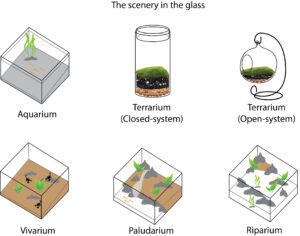
Durian, an exotic fruit that is the King in Southern Asia
Thanks to the convenience of air transportation and the active exchange of commodities globally. Durian, an exotic fruit that most Americans are not familiar with, can be found in most Asian supermarkets across the USA. This fruit is extraordinarily unique, known as the king of the fruits in Southern Asia, but also brings two extremely controversial responses, people either love or hate it. The taste of durian is a complex experience that has been described […]
Read More
Aromatic herbs – the green magic
Herbs are often confused with herbaceous. Generally, herbs are plants that are valued for their flavor, scent, or medicinal properties due to the presence of the volatile compounds. Herbaceous, however, is a botanic term referring to perennial plants that are non-woody foliage and flower in each growing season. Herb usually has a succulent and soft texture, but with exceptions such as rosemary have woody stems with soft sprigs. As one of the essentials in our […]
Read More
Terrarium – the miniature landscaping scenery in the glass
Indoor landscaping such as interior design and vertical wall gardens has become more and more popular as the stay-inside lifestyle becomes mainstream during special times. However, they are relatively expensive and space-consuming for those with smaller units. Moreover, the maintenance of such indoor landscaping requires time, energy, and patience, so the cost is relatively high for those who live an urban hectic life or don’t have green fingers. Therefore, alternatively, people go for the scenery […]
Read More
Conservation of carnivorous plants
Carnivorous plants are popular ornamental plants for their unique appearance and special structures that prey animals. But not many growers are aware of the situation that many of the carnivorous plant species are classified as endangered, such as Aldrovanda sp. and some may have become extinct species. Several factors may cause them to be endangered and extinct directly or indirectly. First, the propagation method of carnivorous plants in nature. Many of the carnivorous plants are […]
Read More
The five key elements for indoor plants to thrive
When I was young, my father used to keep a bonsai and a pot of mini bamboo in the living room, they were static forever, tranquil yet lifeful. Our house plants run in a routine for years, a tray of blooming daffodil in the spring and yellow chrysanthemum in the autumn. We may not notice, but we live closely and co-evolve with plants throughout human history. The first flowering plant appeared about 130 million years ago, […]
Read More
Succulents, the most “suc”-cessful plants
Succulent, the most “suc”-cessful survivor that can be found in arid areas such as desert when nothing is found. Then how about cactus, the most famous desert plant? Well, succulent commonly named as xerophytes, xeros means dry, because of their adaptability to live in a dry environment. Cactus (plural cacti) is one of the widely known examples of succulents. Almost all cacti are stem succulents. Overall, succulents are briefly referring to the rosette-plants that have […]
Read More
Cephalotus – the smallest pitcher plant
Background The smallest carnivorous pitcher is the west Australian pitcher plant, Cephalotus follicularis. It is one of the most desired carnivorous plants in the collection as well as cultivation. Cephalotus is a thumb-size pitcher of compact growth up to two inches long with colorful and bristly pitchers that are seemingly yawning for a bite to eat. It is a monotypic genus under the family of Cephalotaceae that is commonly referred to as the Albany pitcher […]
Read More
Utricularia – the smallest but fastest carnivorous plant
There is the various size of the carnivorous plant, but there is a carnivorous plant that does not look like one due to its tiny size and hidden preying mechanism. This species of Utricularia is under the family of Lentibulariaceae and native to North America. Commonly known as bladderworts, it was virtually unknown except to specialists such as aquarium hobbyists due to several reasons. They are always found in very wet areas or in the […]
Read More